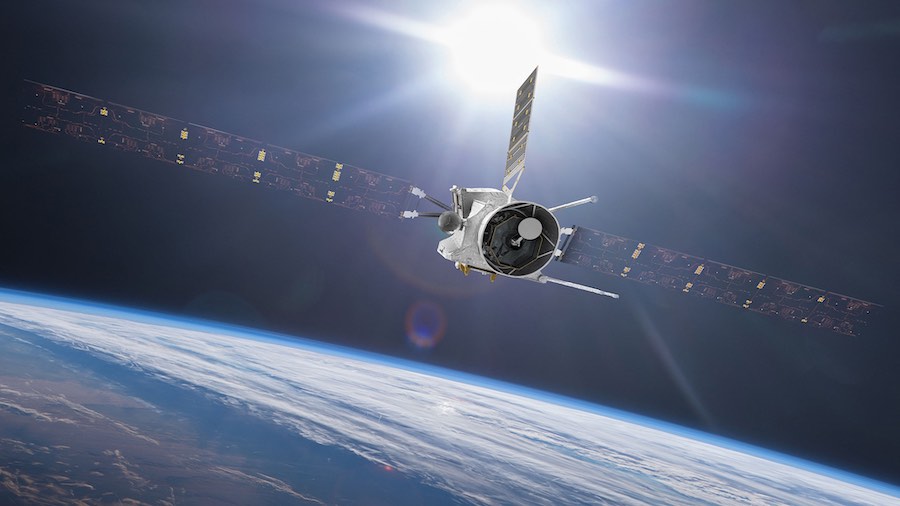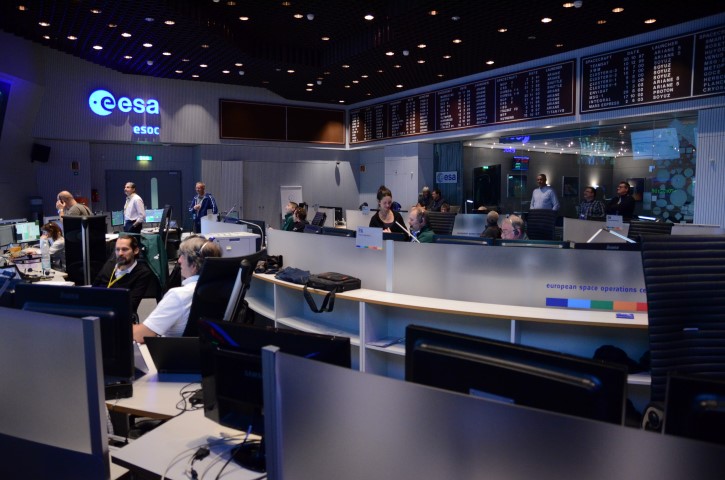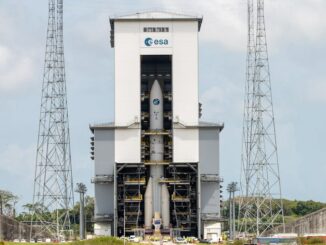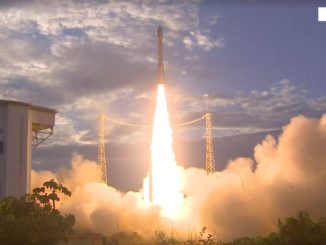
One job deemed essential by the European Space Agency during the coronavirus pandemic involves shepherding the BepiColombo spacecraft through a high-speed flyby of planet Earth next month, an immovable event on the $1.8 billion mission’s seven-year journey to Mercury.
The priority assigned to BepiColombo’s April 10 flyby means a limited team of engineers will be stationed inside the European Space Operations Center, located in Darmstadt, Germany, to oversee the spacecraft’s passage by Earth.
Meanwhile, other ESA science missions have suspended regular operations after officials reduced workforce levels at the control center in Germany. Last week, ESA announced the first positive test result for the COVID-19 coronavirus among the workforce at ESOC.
“Our priority is the health of our workforce, and we will therefore reduce activity on some of our scientific missions, especially on interplanetary spacecraft, which currently require the highest number of personnel on site,” said Rolf Densing, ESA’s director of operations, in a March 24 statement.
ESA said it was suspending instrument operations on four solar system science missions, including the Solar Orbiter spacecraft, which launched last month from Cape Canaveral. Solar Orbiter is on the first leg of a mission that will use a series of gravity assist flybys of Venus and Earth to slingshot closer to the sun, eventually arriving in an orbit to image the sun’s poles for the first time.
When the coronavirus pandemic impacted operations at ESOC, Solar Orbiter was not yet finished with its post-launch commissioning and instrument checkouts.
“ESA expects to resume these operations in the near future, in line with the development of the coronavirus situation,” the agency said in a statement.
Other ESA missions that have paused science operations are the four Cluster spacecraft orbiting Earth to investigate our planet’s magnetic environment, the Mars Express spacecraft that has orbited the red planet since 2003, and the ExoMars Trace Gas Orbiter, which arrived in orbit around Mars in 2016.
“These have stable orbits and long mission durations, so turning off their science instruments and placing them into a largely unattended safe configuration for a certain period will have a negligible impact on their overall mission performance,” Densing said in a statement.
But BepiColombo is coming up on a major milestone on its 5.5-billion-mile (8.9-billion-kilometer) voyage to Mercury, where the mission is scheduled to arrive in December 2025. BepiColombo launched in October 2018 and is on track for its first planetary flyby April 10.
The spacecraft will use Earth’s gravity to bend its trajectory inward toward the sun, taking aim on Venus for the mission’s next gravity assist maneuver Oct. 15.
“This is the last time we will see BepiColombo from Earth,” said Joe Zender, BepiColombo’s deputy project scientist at ESA. “After that it will head deeper into the inner solar system.”

Personnel at ESOC will maintain social distancing guidelines throughout the flyby, according to ESA. While some employees at the control center can work remotely, the high-stakes, fast-paced planetary encounter April 10 requires some staff to work onsite.
“The Earth swing-by is a phase where we need daily contact with the spacecraft,” said Elsa Montagnon, BepiColombo spacecraft operations manager at ESA. “This is something that we cannot postpone. The spacecraft will swing by Earth independently in any case.”
BepiColombo consists of two orbiters — one from Europe and one from Japan — connected with a transfer module to generate solar power and generate thrust from four ion engines.
Once at Mercury, the European Mercury Planetary Orbiter and the Japanese Mercury Magnetospheric Orbiter will separate to enter their own orbits and perform independent measurements at the solar system’s innermost planet.
At the time of closest approach April 10, BepiColombo will reach a point roughly 7,900 miles (12,700 kilometers) from Earth.
“During the critical two weeks prior to the closest approach, we need to upload safety commands to prepare the spacecraft for unexpected problems,” says Christoph Steiger, BepiColombo deputy spacecraft pperations manager. “For example, we need to prepare the transfer module for the 34 minute-long eclipse when its solar panels will not be exposed to sunlight to prevent battery discharge.”
Scientists want to use BepiColombo’s flyby with Earth to test some of the spacecraft’s scientific instruments.
For example, an ultraviolet spectroscope on the Mercury Planetary Orbiter will observe the moon to help calibrate the instrument’s settings before arriving at Mercury.
“We also want to make some measurements of the solar wind and its interaction with Earth’s magnetic field,” said Johannes Benkhoff, ESA’s project scientist for the BepiColombo mission. “The main purpose of having the instruments on at this stage, however, is testing and calibration. If we can use the data for some scientific investigation, it will be a bonus.”
Three on-board “selfie” cameras — positioned to see parts of the spacecraft’s antennas and solar panel — will take a series of images as BepiColombo approaches Earth.
“We will see the Earth approaching and getting bigger,” Zender said. “When it reaches the nearest point, we will take a few images, and then we are planning to capture a whole sequence of photographs over several hours looking at the Earth-moon system as it gets smaller and smaller until we lose it completely.”
BepiColombo will next encounter Venus on Oct. 15, and then again in August 2021. Those gravity assist maneuvers will set up a sequence of six flybys with Mercury before entering orbit around the rocky world in December 2025.
BepiColombo’s European-built science orbiter will map Mercury and study the planet’s geologic history, while the Japanese component of the mission will observe the solar wind’s influence on Mercury.
Besides the four ESA missions no longer collecting science data, officials said ESA’s coronavirus protection measures at ESOC have not affected any other spacecraft operations.
ESA’s astronomy and Earth observation missions are able to continue with just a single technician in the control room at ESOC, the agency said. Other support functions for those mission can be accomplished remotely.
Email the author.
Follow Stephen Clark on Twitter: @StephenClark1.



